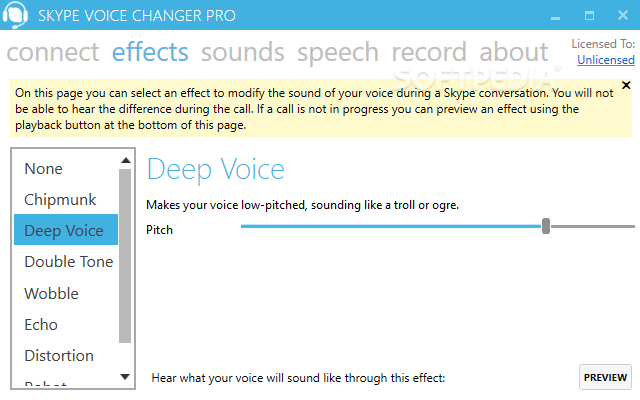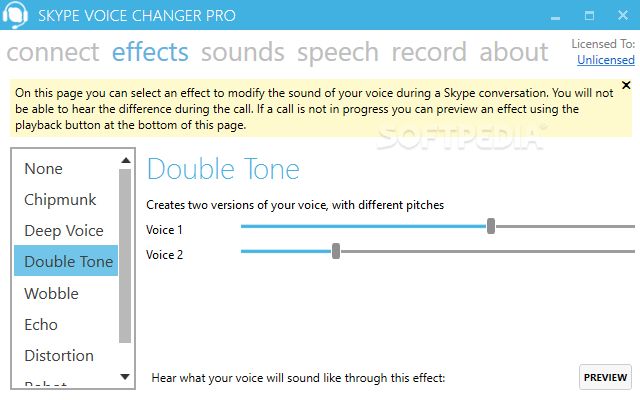
Pritaikykite įvairius kalbos efektus kalbėdami „Skype“ programa. Su ja galėsite pakeisti savąjį balsą neatpažįstamai ir taip nustebinti draugus. Šioje versijoje palaikoma ir naujausia „Skype“ versija.
English:
 Real-time effects processing of your voice during a Skype conversation
Real-time effects processing of your voice during a Skype conversation
Skype Voice Changer was developed to demonstrate how to use NAudio and Skype4COM to allow real-time effects processing of your voice during a Skype conversation. It is developed in C#.
Audio and the .NET Framework
Playing back audio in a .NET application is not quite as easy as you might hope it would be. The .NET 2.0 Framework introduced the SoundPlayer component, which allows you to play back an existing WAV file. While this may be fine for many scenarios, as soon as you want to do things even slightly more advanced, such as changing the volume, or playing back from a different file-format, or pausing and repositioning, you must resort to writing P/Invoke wrappers for various Windows APIs.
Back in 2002, as I was getting started learning .NET, I create some audio-related classes of my own to compensate for the lack of audio support in the .NET Framework. I focused initially on reading and writing WAV and MIDI files, as well as playing back audio in a way that allowed real-time mixing and manipulation of the audio at a sample level. As time went by, I made this growing collection of audio classes available as an open source project, called NAudio, now hosted at CodePlex.
Audio Playback in NAudio
NAudio works by constructing an audio playback graph. Audio comes in “streams” which can be connected together and modified before eventually they go to a renderer. This might be your soundcard if you are listening to the audio, or it might be to a file on the hard disk.
In NAudio, all streams derive from WaveStream. NAudio comes with a collection of useful WaveStream derived classes such as WaveFileReader to read from WAV files or WaveStreamMixer to sum together multiple audio streams.
Audio mixing and effects are almost always performed with floating point numbers (32 bit is most common), so one of the first steps after reading audio out of a WAV file is to convert it from 16 bit to 32 bit. NAudio includes the Wave16To32ConversionStream class to do this. If the audio wasn’t in PCM in the first place, for example it is MP3, then we make use of a combination of the Mp3FileReaderStream, WaveFormatConversionStream and BlockAlignmentReductionStream to read the audio out and get it into just the format we want. Here’s an example showing how to create a WaveStream ready for playback.












